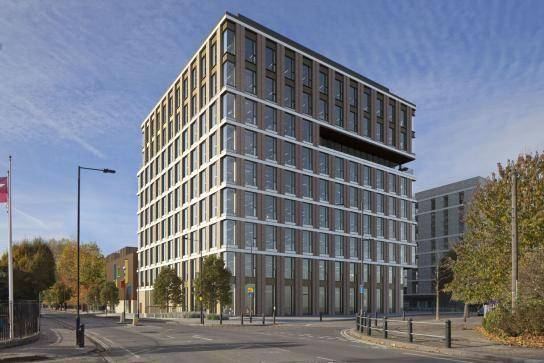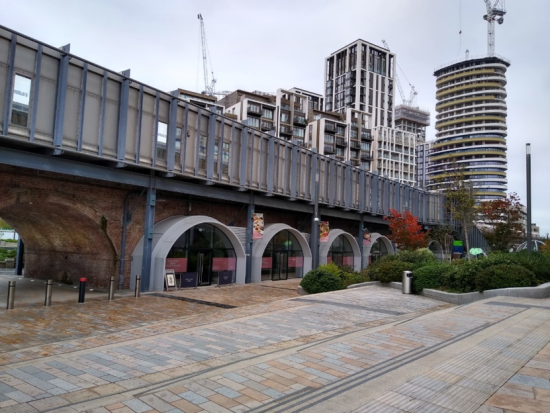Policy E3
Protection of employment land
The council will require the retention of land and premises for the economic uses set out in Policy E2 which would contribute to meeting current and forecast needs set out in the Employment Land Study 2025. Permission will only be granted for a change of use in limited circumstances as follows:
- The location is unsuitable for continued employment use and would adversely impact neighbouring uses. To evidence this, the applicant will need to demonstrate the following:
a) the suitability of the site or premises for continued employment use with or without adaptation and retrofitting has been explored;
b) the need to avoid adverse impact on established clusters of employment use;
c) the need to ensure a sufficient stock of premises and sites to meet local need for a range of types of employment uses, including small and medium sized enterprises (SMEs), and emerging sectors in appropriate locations; and
d) evidence of unsuccessful robust marketing exercise carried out for a range of employment uses appropriate to the location as set out in Appendix 5.
- The council will take into account the need to protect certain types of employment land and premises to meet forecast needs and capacity over the Plan period as follows:
a) Net loss of office floorspace (E(g)(i)/(ii)) will not be supported in the Town Centres and locations identified for office use in Site Allocations within the Regeneration and Opportunity Areas subject to viability, which must also demonstrate that retrofitting has been considered.
b) Land and premises last used for industrial/storage logistics, warehousing and related uses, or which would have the potential to contribute to local, and West London's strategic capacity, unless the site does not meet London Plan policy criteria for such uses.
c) Loss of smaller premises including railway arches and other small-scale workspace last used for employment purposes will not be permitted unless robust evidence can demonstrate that the premise are no longer suitable, and that continued provision is no longer viable.
d) Loss of affordable workspace will not be permitted, unless robust evidence can demonstrate that continued provision is no longer viable.
- In addition, the council will take into account:
a) whether an alternative employment use including where proposed in a mixed use development, intensification or co-location would give a demonstrably greater benefit in terms of quantity, quality, job density and skills/training offer that could not be provided on another site; and/or
b) it can be evidenced that the land and/or premises are no longer required for employment purposes, taking account the need to support emerging and growth sectors and clusters in the borough including the Innovation District.
6.19 Hammersmith and Fulham's location between the City and Heathrow airport and its excellent transport connections make it a highly sustainable and attractive location for business and employment uses, adaptable to meet current and future needs of emerging new employment sectors. Notwithstanding the council's desire to protect valuable sites and promote economic growth in sustainable locations, there has been a loss of office stock in the borough. This can be attributed to a number of factors, including trends towards working from home, an out-of-date office stock which does not meet energy efficiency standards, as a result of permitted development and partly through planning permission. To manage future loss effectively, the council will apply a criteria-based approach to assessing change of use and redevelopment proposed in planning applications based on site characteristics and market demand.
Office market
6.20 The council recognises that the office market is changing and consolidating, and that modern occupiers are now seeking high quality energy efficient buildings. Many of the existing office locations and employment areas are well placed to deliver modern, energy efficient buildings through retrofitting or by redevelopment on existing sites. Delivery of high-quality space will encourage take up and, in line with the council's climate action agenda, proposals should demonstrate that retrofitting measures have been explored first, and that they would be unviable. Further information on retrofitting is provided in the council's Climate Change SPD, and the council may also be able to offer assistance to landlords on retrofitting and related measures to upgrade and improve the accommodation. The council's Climate Change SPD can provide further advice on retrofitting .
Loss of commercial floorspace
6.21 The council will expect that planning applications for loss or part loss of commercial floorspace are accompanied by robust evidence to identify redundancy and justify why the premises or land cannot be brought back into use. Annex 5 sets out the scope for supportive information and marketing evidence before a building can be considered unsuitable for continued employment use. Trends towards stripping out of fixtures and fittings prior to marketing have recently become apparent, leading to increased costs and time needed for fitting out before re-occupation which can be unattractive to potential occupiers and can extend the time building is left empty. The council will therefore only accept marketing evidence where the premises are fitted out and ready for occupation.
6.22 The council adopts the Agent of Change principle, where the applicant is expected to identify impact and mitigate their proposed development in order to accommodate the existing, surrounding uses. This therefore puts the onus on new development to manage impacts, and should contribute to the protection of employment uses in the borough.

Affordable and flexible workspace
6.23 Where a proposed development would include loss of affordable workspace, the council will expect robust viability evidence to justify why it is no longer viable to be retained. The council's Affordable Workspace SPD and supporting viability evidence provide further details. In addition to location and premises requirements, there is an opportunity for existing premises to be reconfigured or redeveloped to deliver smaller units and grow on space to meet the needs of the SME economy in the borough. The council considers there is considerable opportunity for rebalance the stock form large single occupiers to small and smaller flexible configurations suitable for SMEs.
Railway arches
6.24 The council is well provided with railway arches which are important in meeting the needs the large SME sector in the borough, as they provide an important contribution to the stock of smaller and more affordable premises for a range of employment types include light industrial uses. These will continue to be protected, and the council has an adopted Railway Arches SPD which provides more details and guidance on appropriate uses and development proposals.
6.25 The council's industrial, logistics, warehousing and related needs are met primarily in the protected strategic industrial land needs are met primarily in outer west London boroughs and within the OPDC boundary. Smaller scale uses are located across Hammersmith and Fulham. The London Plan provides a policy approach for the location and continued operation of these industrial typologies. Smaller scale uses within Hammersmith and Fulham contribute to meeting local needs, and the council will seek to retain land last used for industrial and related use where these are appropriately located. The NPPF and the Industrial Strategy promotes new and emerging industries, and many of these sites have a role to play in adapting to changing typologies in the wider industrial, logistics, or self-storage sectors. The council will have regard to regular monitoring undertaken by itself and the Mayor of London, and to supplementary planning guidance and the London Plan.

6.26 The London Plan identifies White City as an area where transfer of industrial and warehousing land to other uses should be "restricted (with exceptional planned release)". Applications for change of use of industrial and warehousing (Use Classes E(g)(iii), B2 and B8) sites and premises will be subject to consideration of this classification. The council also wishes to ensure that the future of Hammersmith town centre and the wider Hammersmith Regeneration Area continues to offer a range of modern office and employment facilities and is not adversely affected by a loss of office uses. Where premises are part of a complex of employment uses, regard will be taken of the impact of the introduction of an alternative use on the satisfactory functioning of the employment cluster.
Industrial intensification
6.27 There may be some sites in employment use that are capable of more intensive use to accommodate additional uses, particularly residential. Where this is appropriate, the council will seek to ensure that floorspace is retained within mixed use schemes for employment uses for which there is a demonstrable need. This will include adequate replacement accommodation for small businesses. The GLA's practice note: 'Industrial intensification and co-location through plan-led and masterplan approaches' 2018 provides useful guidance on industrial land, industrial intensification and co-location.